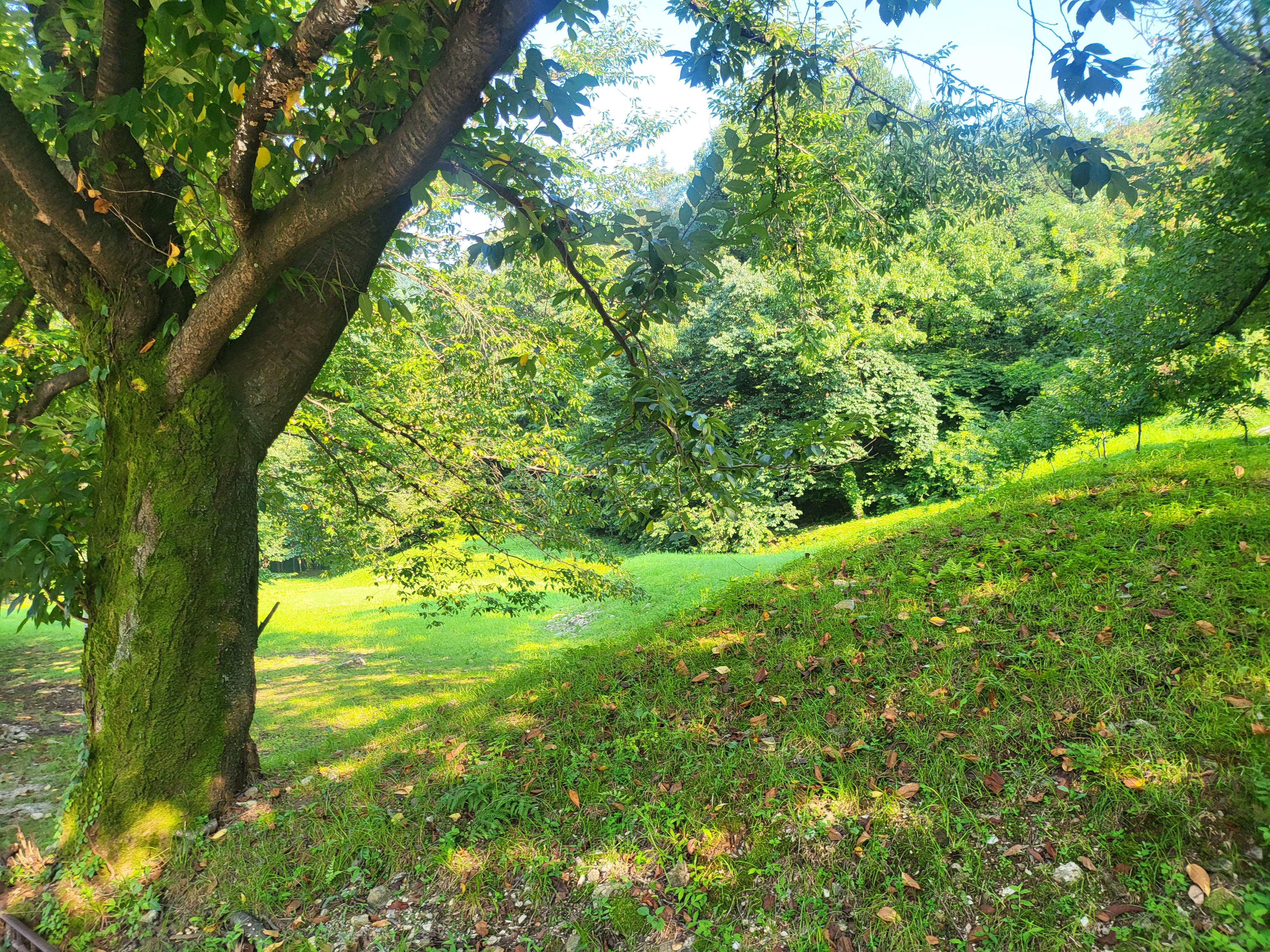
이하는 현지 문화재 안내판 설명이다. 국문 영문 모두 손댈 곳이 좀 많으나, 위선 그대로 소개한다.
공주 학봉리 요지
Hakbong-ri Kiln Site of Gongju
사적 제333호
Historic Site No. 333
공주 학봉리 요지는 조선시대 전기 15~16세기에 철화분청鐵畵粉靑을 굽던 가마가 집중적으로 분포하고 있는 곳이다.
계룡산 기슭인 학봉리 일대는 풍부한 땔감과 태토, 유약 등의 원료를 주변에서 쉽게 얻을 수 있는 곳으로, 조선시대에 수많은 도자기 가마들이 운영되었다.
이 가운데 철화 분청사기의 양식이 매우 독특하여 특별히 계룡산 분청사기라고도 불린다.
철화분청은 흰 바탕白土粉粧 위에 거침없이 펼쳐진 산화철酸化鐵 성분의 자연친화적인 장식무늬인 흑갈색 철화문이 특징이다.
특히 물고기, 모란당초, 연당초 등의 철화문은 다른 지역에서는 찾아볼 수 없는 독특한 모습이며, 강한 색의 대비와 자유롭고 추상적인 철화분청 문양은 조선시대 사람들의 미감과 생활철학을 엿불 수 있다.
공주 학봉리 도요지에서 출토된 그릇의 종류는 대접, 접시, 완 동으로 다양한데 일본 다완茶碗의 일부 품목은 그 뿌리를 학봉리 도자기에서 찾을 수 있다.
도요지에 대한 조사는 1927년에 일본인 학자가 발굴하여 가마의 구조를 확인하였으며. 이후 1992년의 발굴과 2007년 정밀 지표조사를 통하여 우리나라 도자기 연구에 매우 중요한 자료들을 발견하였다.

Hakbong-ri kin site of Gongiu is known for plenty of kilns which produced cheolhwa-buncheong[burcheong ceramies in underglaze iron] in the early Joseon period[15th to 16th centuries].
Among many ceramics produced here, cheolnwa-buncheong has been specially called Gyeryongsan-buncheong because its distinctive style.
Cheolhwa-buncheong is characterlzed by dark-brown, nature-friendly underglaze iron-oxide pattern which is decorated on the white surface.
A varieiy of ceramics including bowls of different sizes and dishes were excavated.
Hakbong-ri kin site ol Gongju and some of the Japanese tea bowls originate from here.
In 1927, a Japanese researcher excavaled and investigated this kin site, identitying the structure ol the kilns.
At the additional excavations in 1992 and the precise earth surface investigations carried out in 2007, a lot ol valuable material were found, which would make great contribution to the researches on the Korean ceramics.

다음은 문화재청 제공 영문 정보다.
Historic Site
Kiln Site in Hakbong-ri, Gongju
공주 학봉리 요지 ( 公州 鶴峰里 窯址 )
Classification Historic Site
Name of Cultural Properties Kiln Site in Hakbong-ri, Gongju
Quantity 33,416㎡
Designated Date 1990.08.21
Age Joseon Period
Address San 22-1, Hakbong-ri, Banpo-myeon, Gongju, Chungcheongnam-do and others
This site is where ceramics, roof tiles, and vessels are made. There is a road for Sindoan and Donghaksa Temple when one goes from Yuseong to Donghaksa Temple.
Nearby at the foot of Gyeryongsan Mountain are many kiln sites distributed, with this kiln site in Hakbong-ri at the center and presumed to have been made from the 15th to the 16th century.
According to a report made during the Japanese Occupation, many kilns were constructed on the inclined surface of the base of a mountain.
The structure is made through a procedure of first digging ground and making a long hole, followed by laying clay around to make the ceiling and wall.
Buncheong celadon pieces in underglaze iron, brush-marked celadon pieces, and white porcelain pieces were excavated, with buncheong celadon pieces in underglaze iron as the representative relic.
The kinds of vessels vary, such as bowl, dish, bottle, and kettle with patterns including chrysanthemum, lotus flower, fish, bird, etc.
There is a representative producing district of buncheong celadon pieces in underglaze iron, and it is very significant and is famous for the engraved liberal and bold patterns.
'문화재현장' 카테고리의 다른 글
| 세계유산 등재 초안과 결정문, 일본 메이지산업유산의 경우 (0) | 2023.08.05 |
|---|---|
| 인천 검단신도시박물관 건립 추진 현황 (0) | 2023.08.04 |
| 국가유산기본법 생각 4 – 과연 유형과 무형은 나뉘어야 하는가? by Eugene Jo (0) | 2023.07.31 |
| 그리스 한국전쟁 참전 기념비 (아테네, 파파구) (0) | 2023.07.31 |
| 학봉장군 미라의 관곽 (0) | 2023.07.29 |




댓글